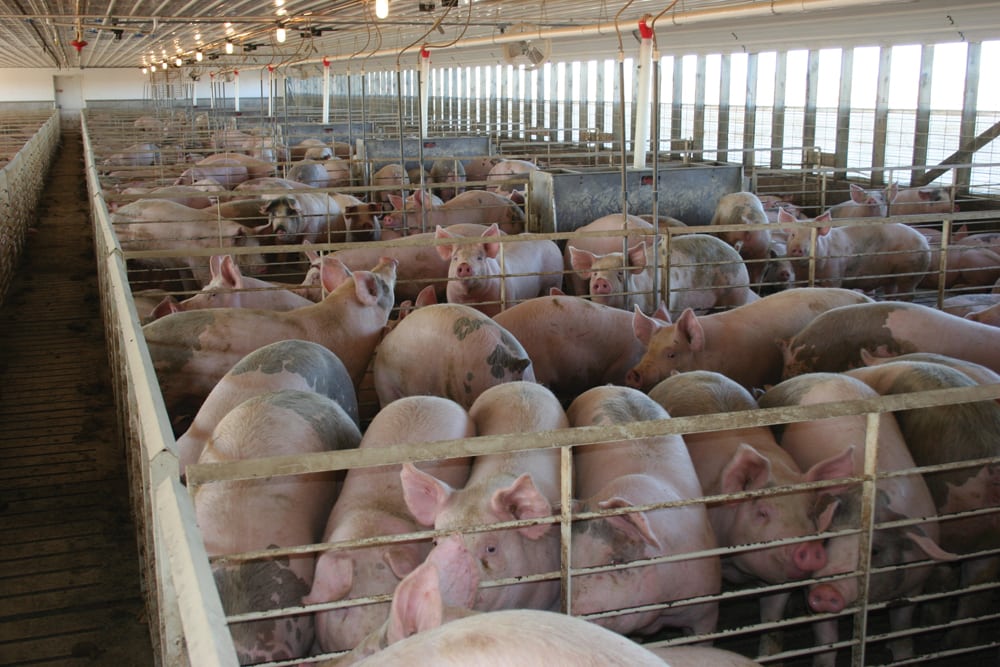Porto Alegre, December 1, 2021 – The dynamics of the global meat market will remain guided by great uncertainties in 2022, considering that African Swine Fever (ASF) will remain present in several countries in Asia and Eastern Europe. The clear focus will be on China, however, the information coming from its market tends to remain dispersed, which will deserve double attention over the year. News around ASF has gained strength over the past few days, with reports of complications in Russia and Vietnam. The attached map shows that there are also many cases in Germany, Poland, and Romania, however, these countries are not importers. The disease is difficult to control due to wild boar and the human factor. In several places in Asia, production is not as highly professional as in Brazil. For example, the management of waste and illegal transport of animals and meat end up compromising disease control.
Russia and Vietnam are large consumers of pork and may have aggressive imports in the coming few months, so Brazil can advance the flow of shipments, which is important, considering the moment of uncertainty about the potential purchases by China in the coming months, which would result in greater domestic availability in an environment of shy demand. Despite the recent pork highs in the Chinese market, prices remain depressed compared to the end of 2020, which reduces their import momentum. It is worth mentioning that last October was the year’s second-worst shipment of Brazilian pork to the Chinese market, at 37.353 thousand tons. These data may be isolated, but they leave the sector cautious about the upcoming numbers.
In relation to Russia, the price of pork in its territory is skyrocketing this year with the advance of ASF. According to the president of the National Union of Swine Breeders, since the beginning of the year cases have been reported in 35 regions of the country, including wild boar and farm animals. In September, an outbreak of ASF was reported in the Belgorod region, a major producer. With the worsening of the situation, companies in the sector are adjusting their production forecasts for the end of 2021, with a modest advance compared to last year, not keeping up with the evolution of domestic demand. Thus, despite the worsening of ASF in the country, it is far from the magnitude registered by China between 2018/2019, but enough to unbalance the Russian market.
This situation of supply deficit helps to explain the recent reopening of 12 Brazilian meat suppliers (9 of pork and 3 of beef) by Russia. Another measure the country adopted was the establishment of a duty-free import quota of 200,000 tons of beef and 100,000 tons of pork in 2022. Before 2020, the exempt quota was 430,000 tons of pork a year. Depending on the ASF status and local production, the Russian import window should not be prolonged, limited to 2022, which deserves attention. The country expects to expand production in 2022, which, together with imports, must reduce meat prices in the country. That would only happen if ASF does not worsen, otherwise imports could advance into 2023.
Brazil will now have 13 suppliers accredited to export to Russia. It is still very difficult to specify which volumes will be exported, even though Brazilian pork and beef have as favorable points their attractive prices and high quality. Before the ractopamine-related barrier in 2017, Russia was the main destination for Brazilian pork. Between January and October this year, Brazil exported 3.827 thousand tons of pork to the Russian market. Out of this total, 2.181 thousand tons were shipped in October alone.
As for Vietnam, the government announced that ASF is evolving in a complicated way and that there is the threat of its spreading on large scale in the country. According to the statement, the disease has already spread to 57 of the 63 provinces in Vietnam this year, with 230,000 animals already lost, three times more than in 2020. The situation brings uncertainties around the country’s herd replenishment, after the already sharp losses of around 20% in 2019. In October, Brazil exported 8.393 thousand tons to Vietnam, up from 4.316 thousand tons in September.
In relation to China, the cases of ASF reported by the World Organization for Animal Health (OIE) have been sparse, which is noteworthy considering the great expansion of its territory and that neighboring countries show considerable growth in cases. In 2021, 14 cases were reported in China alone. Throughout the year, industry representatives claimed that part of the strong expansion of Chinese production was due to concerns about the disease, leading small producers to accelerate sales of animals, including low-productive matrices. The high cost of production and losses also accelerate slaughter in China. The Chinese government adopts measures aimed at reducing its supply and leveraging prices at levels that allow profitability and do not drastically compromise its future production. In this sense, the advance of ASF notices would be counterproductive and could cause a new wave of sales and pressure on prices. The real situation of ASF and its impacts in China is still difficult to be measured accurately, thus the market must pay attention to the evolution of prices in the Chinese swine chain, the data of the herd of matrices, and the customs import and export numbers of major global players for the Asian country.
Agência SAFRAS Latam
Copyright 2021 – Grupo CMA

